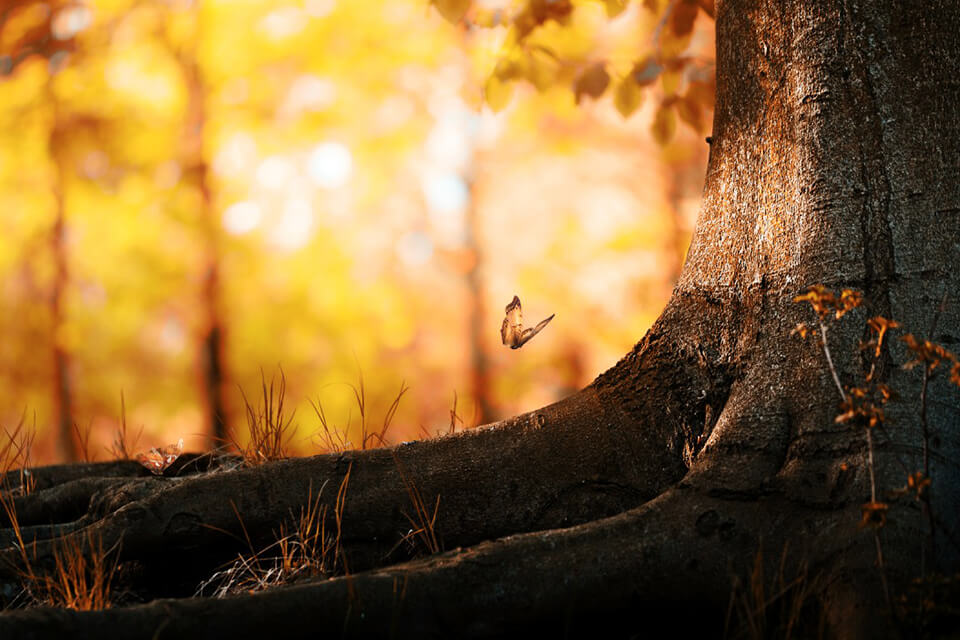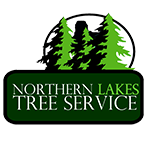Diseases in Trees
It is not only humans or animals that are safe from disease; trees can also be hurt by these harmful agents of nature. There are numerous bacterial and fungal infections that a tree may incur. These diseases are caused by different factors, such as the overall health of the tree, soil conditions, geographical locations, and more.

Image Source Link: https://www.hdwallpapers.in/butterfly_wood-wallpapers.html
It is important to take action as soon as we notice an infected tree. Diseases are not a death sentence for trees, as long as we notice them in time. Many diseases can be cured and treated as long as we identify the cause of the disease. In any case, a call from the local arborists can be sought to cure the infected tree or to remove it completely.
Here are some of the most common examples of tree diseases.
(From Yvonne Barkley’s Common Tree Problems in Idaho)
Red-band needle cast.
- Cause: Fungal. Mycosphaerella pini (imperfect: Dosthistroma septospora). Formerly Scirrhia pini (imperfect Dosthistroma pini). The fungus attacks both current-season needles and needles produced in past seasons.
- Susceptible species: all pines; especially serious in Christmas tree plantings.
- Transmission: wind and rain.
- Symptoms: Chlorotic spots appear on the infected needles during the fall and winter. The spots gradually spread, turn red-brown, and girdle the needle, causing the tip to die while the rest of the needle remains green. Spores are produced on the needles in the spring and have been disseminated by mid-August. Defoliation of trees may occur during the growing season, rendering the trees useless for sale.
- Cultural Control.
*Prune out the lower whorl of branches at the first opportunity.
*Clean out debris from inside and around the tree.
* Avoid planting in low-lying areas with poor air drainage.
*Space, or thin plants, to encourage good air circulation.
Control weeds around the bases of trees.
Shear trees during dry weather.
Rusts
- Fungal
- Various species of rust occur on spruce, fir, pine, etc.
- The most known conifers are white pine blister rust, western gall rust, and cedar apple rust.
- Primarily in woodland situations.
- We need an alternate host to survive.
- Example: white pine blister rust.
Mites
- Most species of conifers are very common on Colorado blue spruce and arborvitae; they are primarily urban problems.
- Mites are generally small, wingless, eight-legged creatures that resemble little spiders.
- Some suck juice from leaves; others prey on or are otherwise associated with forest insects.
- Some are important contributors to decomposition, recycling nutrients back into forest soils. Others are pests of man and animals.
- More important for ornamentals than in woodland situations.
- Usually, we see webbing; often, we see mites or body parts; in the spring and fall, we see red eggs. Like hot, dry, dusty environments.
- Most commonly seen in the clinic on Colorado blue spruce and arborvitae during the dry period of the summer.
Anthracnose
- Cause: A fungus of different genera on different host plants.
- Susceptible spp.: apple, ash, blackberry, blueberry, clover, currant, dogwood, gooseberry, lawn and turf, lettuce, maple, oak, pepper and eggplant, raspberry, statice, sycamore, tomato, walnut. Probably others.
- Transmission: The various fungi responsible for anthracnose overwinter in fallen leaf litter, nuts, and cankers. In the spring, spores are released and spread by rain and wind. Successive generations of spores are produced through the summer in primary and secondary lesions and subsequently spread the disease.
- Symptoms vary with the species under attack. Usually discolored (yellow, tan, brown, red, or purple) blotches or contortions on leaves Lesions or blotches may be vein-associated. Early defoliation may occur in severely affected plants.
- There are some specific cultural controls for individual species; orchard situations have much more extensive cultural and chemical controls.
- Cultural control.
*Prune out and burn affected branches.
*Rake and burn fallen leaves and nuts.
Avoid overhead irrigation.
Birch dieback
- Cause: Environmental: drought stress and bronze birch borer
- Susceptible species: birch.
- Symptoms: gradual decline of trees from the top down; faster decline during extended periods of drought. Leaves turn tan and become brittle while remaining attached to the tree. Quickly becomes associated with the bronze birch borer, accelerating the decline.
- Cultural control:
Avoid planting birch in areas without sufficient water.
*Deep water trees throughout the summer months; dead branches will not come back to life.
These are just some of the diseases and common tree problems that can be found in trees.
Call us for questions.
To understand more about tree diseases and how to treat them, you can contact our tree specialist now for a free assessment or estimate. Northern Lakes Tree Service will provide you with affordable, high-quality, and professional tree services such as tree removal, tree pruning and shaping, stump grinding, topping and thinning, tree planting and transplanting, lawn care services, and landscape maintenance services.
We provide the following services in North Idaho and other nearby locations:
- North Idaho: Priest Lake, Priest River, Oldtown, Sandpoint, Ponderay, Bonners Ferry, Cocalalla, Diamond Lake, Sacheen Lake, Rathdrum, Spirit Lake, Twin Lakes, Coeur d’Alene, and the Hayden Lake Area.
- Eastern Washington: Newport, Deerpark, Elk, Spokane County, and Spokane Area
Contact Information:
Owner: Damon M. Bretthauer
Phone: (208) 443-3600
Cell: (208) 610-3718
